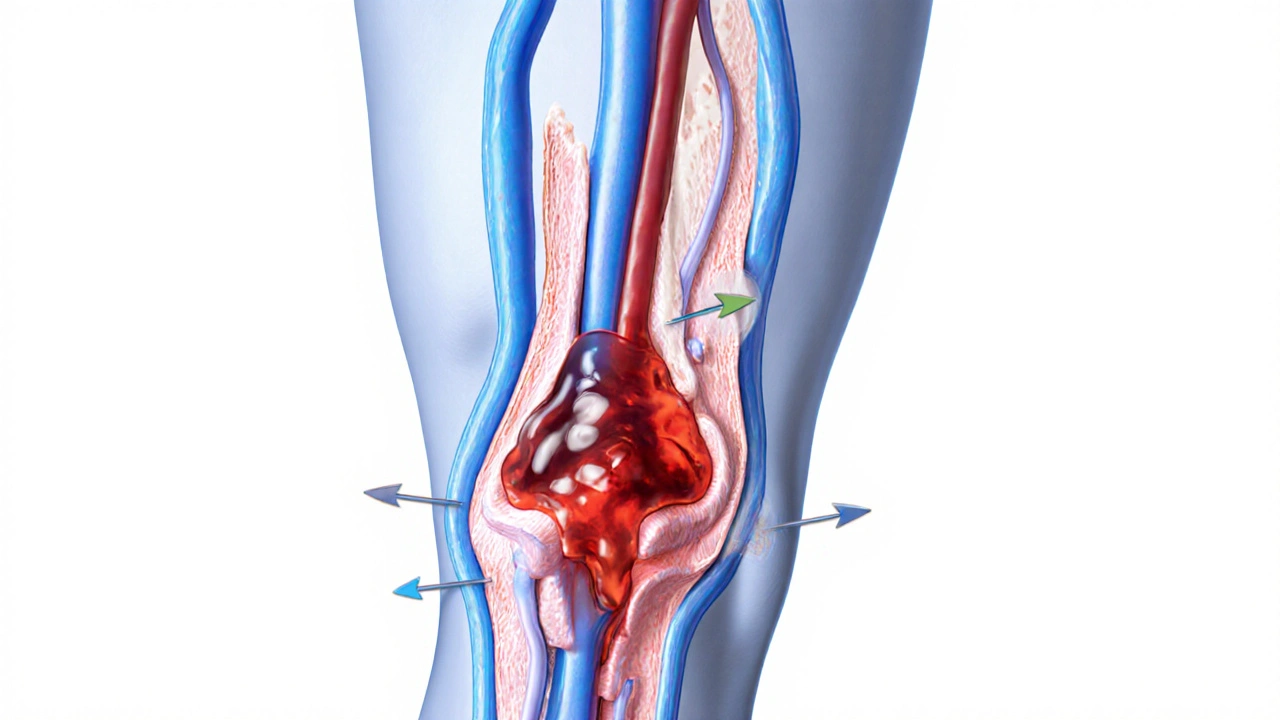Anticoagulant Therapy: What You Need to Know About Blood Thinners and Drug Risks
When you're on anticoagulant therapy, a treatment that prevents dangerous blood clots by slowing down the body’s clotting process. Also known as blood thinner treatment, it's used for conditions like atrial fibrillation, deep vein thrombosis, and after heart valve replacements. But this therapy isn't simple—it demands careful management because even small changes in diet, other meds, or health status can push you into serious danger.
One of the biggest risks isn’t the drug itself—it’s what you mix it with. warfarin, a common anticoagulant that requires regular blood tests to monitor its effect, reacts badly with common things like turmeric, black pepper, and even some antibiotics. A supplement you think is harmless could cause internal bleeding. And it’s not just pills—some pain relievers, antifungals, and even heart medications can interfere. For example, proton pump inhibitors can mess with how certain drugs are absorbed, and switching generic versions of drugs like phenytoin can throw off your whole balance. If you’re on anticoagulant therapy, every new medicine or supplement needs a second look.
It’s not just about what you take—it’s about what you’re at risk for. Seniors on blood thinners are more likely to fall, and a simple slip can turn into a life-threatening bleed. Some drugs, like tramadol or certain antidepressants, lower your seizure threshold or trigger mania in people with bipolar disorder, making them extra risky if you’re already on anticoagulants. Even something as simple as changing your vitamin D intake or crossing time zones with insulin can ripple through your system in ways you don’t expect. The science is clear: anticoagulant therapy doesn’t exist in a vacuum. It’s tied to your liver, your kidneys, your diet, your age, and every other medication you’re taking.
What you’ll find below isn’t just a list of articles—it’s a practical guide to navigating the real-world risks of anticoagulant therapy. From how turmeric boosts bleeding risk to why switching generic phenytoin can be deadly, these posts cut through the noise. You’ll learn what to ask your pharmacist, which drugs to avoid, how to spot warning signs of internal bleeding, and what alternatives exist when things go wrong. This isn’t theory. It’s what people actually deal with every day—and what you need to know to stay safe.
- Archer Pennington
- 11
Deep Vein Thrombosis: Key Risk Factors & Proven Prevention Strategies
Learn what Deep Vein Thrombosis is, its key risk factors, and practical prevention steps-from movement and compression stockings to anticoagulant therapy-for a safer, healthier life.
Read more
